Tag: Archaeology
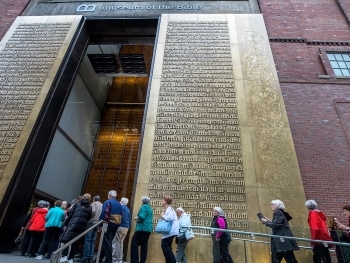
The Bible in Museums: Where to See Ancient Scripture Today
The Bible, as one of the most influential books in human history, has shaped not only religious beliefs but also the course of civilization. Its stories, teachings, and moral lessons have impacted art, literature, law, and culture for centuries. Toda...

Archaeologists Uncover Possible Oldest 3D Map, Dating Back 13,000 Years
A team of archaeologists has identified what may be the world’s oldest known three-dimensional map, according to a new study. The discovery was made at Ségognole 3, a prehistoric sandstone rock shelter located south of Paris, France. While the sit...
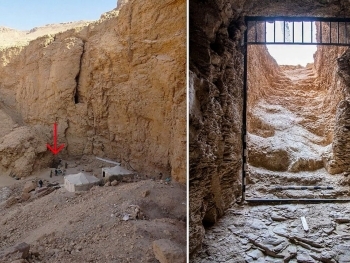
Archaeologists Discover 3,500-Year-Old Tomb of ‘Missing Pharaoh’ in Egypt
Burial Site of Thutmose II Hailed as the Most Significant Find Since Tutankhamun British archaeologist Piers Litherland had spent over a decade exploring the remote western wadis near Egypt’s Valley of the Kings when he made a breathtaking discover...

Ancient Jewish Ritual Bath Unearthed Near Rome Sheds Light on Jewish Life in the Roman Empire
Archaeologists in Italy have uncovered the remains of an ancient Jewish ritual bath, or mikveh, near Rome, marking the oldest known discovery of its kind outside the biblical regions of Israel and its surroundings. The mikveh was found during an ongo...

Archaeologists Unearth 141 Ancient Gold Coins, Including Rare Pieces from a Forgotten Roman Emperor
A remarkable discovery in northern Luxembourg has provided historians with fresh insight into the final years of the Western Roman Empire. Archaeologists have uncovered a hoard of 141 gold coins near the village of Holzthum, dating back to the late f...
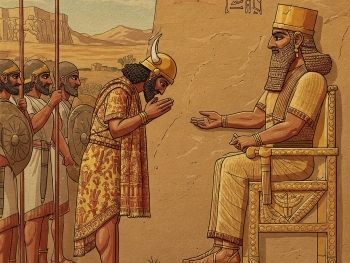
Jehu Bows Before Shalmaneser III: A Unique Depiction in Ancient Near Eastern Art
One of the most fascinating and historically significant reliefs from the ancient Near East is the depiction of Jehu, king of Israel, bowing before the Assyrian king Shalmaneser III. This image is part of the famous Black Obelisk of Shalmaneser III, ...

Archaeologists Uncover 1,500-Year-Old Monastery with Stunning Mosaic Floor
A team of archaeologists has discovered the ruins of a remarkable Christian monastery dating back approximately 1,500 years in Israel. Among the most striking finds is a beautifully preserved mosaic floor featuring vibrant colors and intricate design...
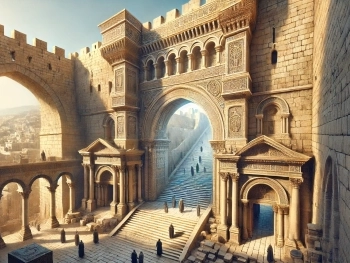
Why Do the Huldah Gates Appear Different in Ancient Replicas and Modern Photos?
The Huldah Gates, located on the southern wall of the Temple Mount in Jerusalem, are a significant archaeological and historical feature. These gates served as entrances and exits for worshippers ascending to the Temple during the Second Temple perio...

Did the Rosetta Stone Disprove the Bible’s Account of the Exodus?
The Rosetta Stone, a remarkable artifact from ancient Egypt, has been pivotal in deciphering hieroglyphics and unlocking the mysteries of Egypt's past. However, it does not explicitly address the Exodus or the story of the Israelites. This absence ha...
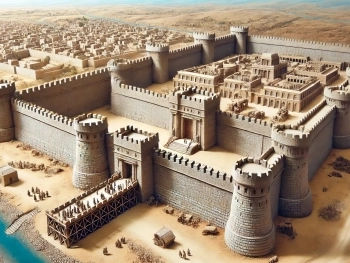
Why Were Ancient City Walls So Thick and High?
Throughout history, ancient cities often constructed massive walls to protect their inhabitants, with some walls reaching incredible thicknesses of 30, 40, or even 50 feet, and heights of 20 to 30 feet. These formidable structures were not merely arc...
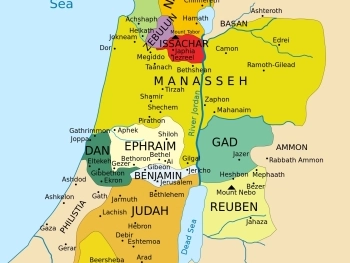
The Ten Lost Tribes of Israel: A Mystery That Has Endured for Centuries
The Ten Lost Tribes of Israel are the ten of the Twelve Tribes of Israel that were said to have been exiled from the Kingdom of Israel after its conquest by the Neo-Assyrian Empire in 722 BCE. These were the tribes of Reuben, Simeon, Dan, Naphtali, G...
About
Welcome to Free Bible: Unearthing the Past, Illuminating the Present! Step into a world where ancient history and biblical narratives intertwine, inviting you to explore the rich tapestry of human civilization.
Discover the captivating stories of forgotten empires, delve into the customs and cultures of our ancestors, and witness the remarkable findings unearthed by dedicated archaeologists.
Immerse yourself in a treasure trove of knowledge, where the past comes alive and illuminates our understanding of the present.
Join us on this extraordinary journey through time, where curiosity is rewarded and ancient mysteries await your exploration.
Recent posts
-

Faith Through Art: Bible Craft Ideas for Teens and Children
Faith can take many forms—spoken, sung, or even painted. For teens and children, expressing spirituality through art is a hands-on way to explore biblical themes while having fun and developing creative skills. Crafting allows young believers to interact with stories, symbols, and lessons in a way that feels personal and... -

The Kings of Persia in the Bible: Historical and Theological Perspectives
The Persian Empire looms large in the latter chapters of the Hebrew Bible, not only as a dominant world power but as an unexpected instrument of divine will. While ancient empires like Egypt, Assyria, and Babylon are often depicted as oppressors of Israel, the kings of Persia occupy a more... -

Babylon, Persia, and the Exile: How Iran Shaped Jewish Identity
The Babylonian exile is often seen as one of the darkest moments in Jewish history—a time of destruction, displacement, and despair. Yet, it was also a transformative period, one that reshaped Jewish faith, practice, and identity in profound ways. While Babylon (in modern-day Iraq) was the setting for exile, it... -

Zion and Susa: Two Sacred Cities in Dialogue Through History
At first glance, Zion—the biblical name for Jerusalem—and Susa—the ancient royal city of Persia—seem worlds apart. One is the spiritual heart of the Hebrew Bible and Jewish tradition; the other, a seat of imperial power in ancient Iran, known from royal inscriptions and palatial ruins. Yet within the pages of... -

Apocalyptic Visions and Persian Power: Iran in the Books of Daniel and Ezra
Ancient Persia—modern-day Iran—plays a pivotal but often underexplored role in the prophetic and apocalyptic literature of the Hebrew Bible. Two books in particular, Daniel and Ezra, shed light on the complex intersection of divine vision and imperial rule. Set against the backdrop of Persian dominance, these texts offer both a...
Main Menu
- Ancient Assyrian Social Structure
- Ancient Babylonia
- Ancient Canaan During the Time of Joshua
- Ancient History Timeline
- Ancient Oil Lamps
- Antonia Fortress
- Archaeology of Ancient Assyria
- Assyria and Bible Prophecy
- Augustus Caesar
- Background Bible Study
- Bible
- Biblical Geography
- Fallen Empires - Archaeological Discoveries and the Bible
- First Century Jerusalem
- Glossary of Latin Words
- Herod Agrippa I
- Herod Antipas
- Herod the Great
- Herod's Temple
- High Priest's in New Testament Times
- Jewish Literature in New Testament Times
- Library collection
- Map of David's Kingdom
- Map of the Divided Kingdom - Israel and Judah
- Map of the Ministry of Jesus
- Matthew Henry Bible Commentary
- Messianic Prophecy
- Nero Caesar Emperor
- Online Bible Maps
- Paul's First Missionary Journey
- Paul's Second Missionary Journey
- Paul's Third Missionary Journey
- Pontius Pilate
- Questions About the Ancient World
- Tabernacle of Ancient Israel
- Tax Collectors in New Testament Times
- The Babylonian Captivity
- The Black Obelisk of Shalmaneser
- The Books of the New Testament
- The Court of the Gentiles
- The Court of the Women in the Temple
- The Destruction of Israel
- The Fall of Judah with Map
- The History Of Rome
- The Incredible Bible
- The Jewish Calendar in Ancient Hebrew History
- The Life of Jesus in Chronological Order
- The Life of Jesus in Harmony
- The Names of God
- The New Testament
- The Old Testament
- The Passion of the Christ
- The Pharisees
- The Sacred Year of Israel in New Testament Times
- The Samaritans
- The Scribes
Ancient Questions
- What Historical Sources do we have for the Life of Alexander the Great?
- How did the ancient Mayans develop their sophisticated calendar system?
- How was Abraham Dressed?
- How did the ancient Persians create and administer their vast empire?
- What were the major achievements of the ancient Greeks in art and architecture?
- How did ancient civilizations like the Incas and Aztecs build their remarkable cities and structures?
- Did the Ancient Romans Dine at a Table?
- Who was Jupiter in Roman Mythology?
- What is the Western Wall?
- What was a Roman Centurion?
Bible Study Questions
- The International Standard Version (ISV): Historical Overview, Comparison, and Impact on Biblical Studies
- The New Revised Standard Version (NRSV): Aspects, Comparisons, Impact on Biblical Studies, and Differences from the NRSVue
- Analyzing the New Century Version (NCV): Language Examples and Comparison with Other Bible Translations
- How do we understand the concept of eternal life and the afterlife?
- The Message: Specific Aspects, Comparison to Other Paraphrases, Impact on Bible Study, and Theological Distinctives
- What does the Bible teach about forgiveness?
- The Use of Divine Names in the Names of God Bible (NOG): A Comparative Analysis
- What does biblical archaeologist said about hieroglyphics?
- Why Do Christians Celebrate Christmas?
- The New Life Version (NLV): Simplified Language and Comparisons with Other Easy-to-Read Bible Translations